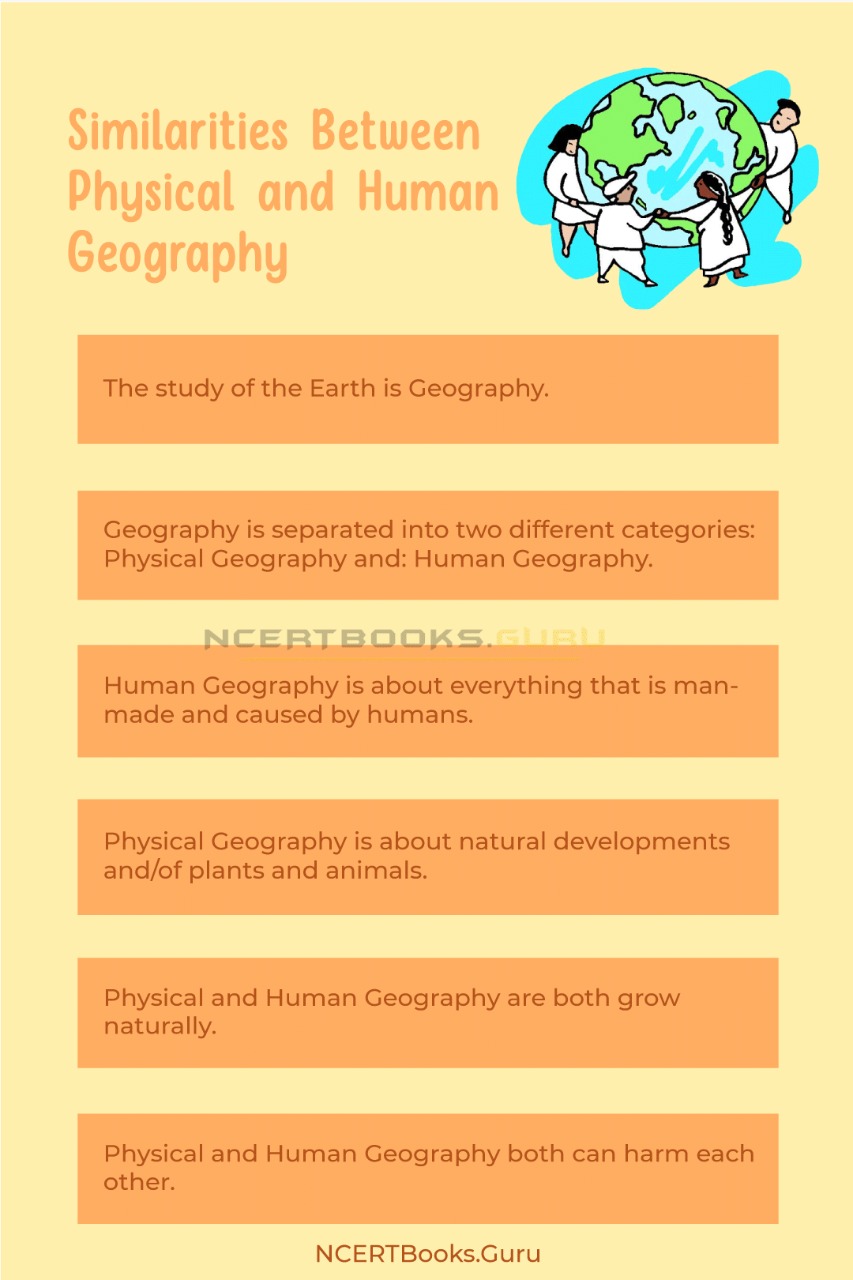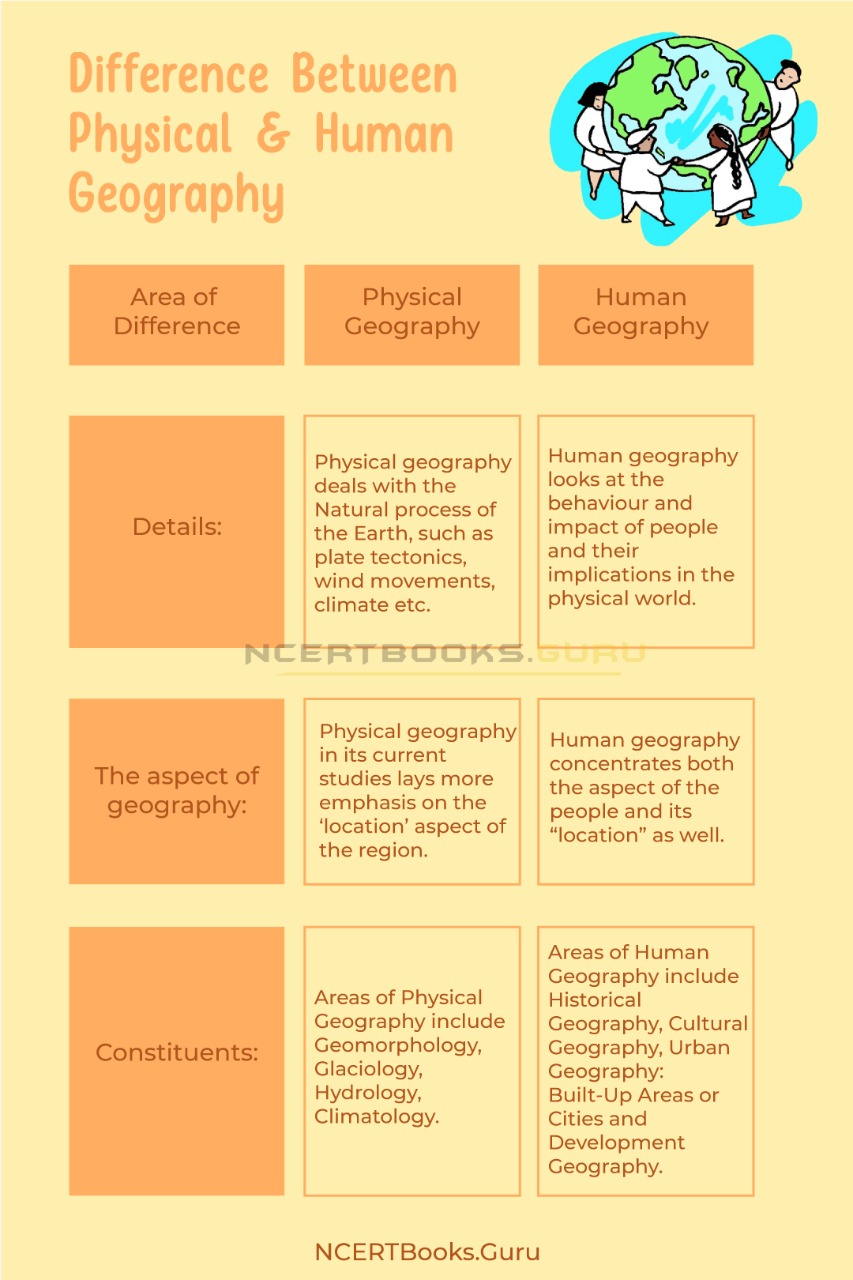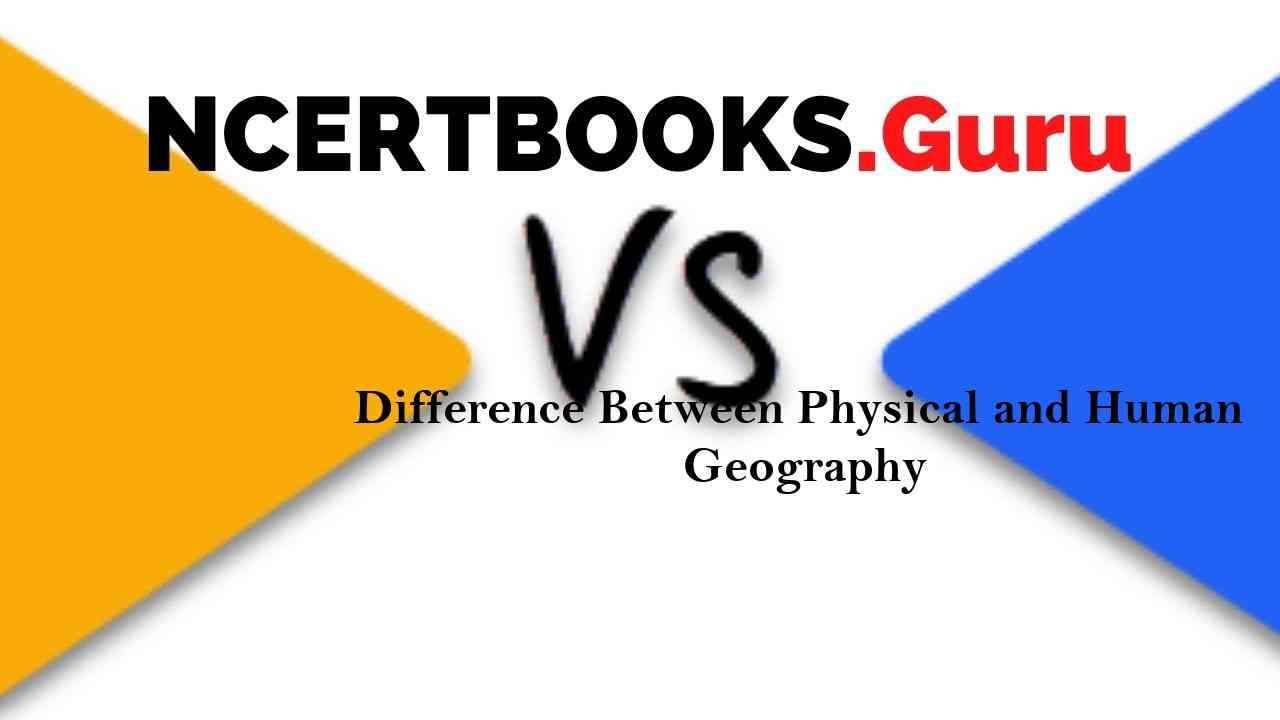Introduction
Physical and Human Geography are the two principal branches of Geographical Sciences. Physical geography is what we are more familiar with as it involves bodies of water, earth’s land areas, plant life etc. Physical geographers help in making decisions about managing different types of resources such as forests, land and water.
You can also find differences between articles on various topics that you need to know. Just tap on the quick link available and get to know the basic differences between them.
What is the Difference Between Physical and Human Geography?
About Physical Geography
Physical geography focuses upon processes shaping and the character of the land-surface and its envelope of the Earth, emphasizes the temporal changes and the spatial variations that occur which is necessary to understand the contemporary Earth’s environments.
Its purpose is to understand how the Earth’s physical environment is affected by, is the basis of human activity. Physical geography was conventionally subdivided into climatology, biogeography, hydrology and geomorphology.
About Human Geography
The study of the interrelationships between place, environment and people, and how these vary temporally and spatially across and between locations. Whereas physical geography concentrates on environmental and spatial processes that shape the natural world and tends to draw on the natural and physical sciences for its scientific underpinnings and methods of investigation.

Difference Between Physical and Human Geography
| Area Of Differentiation: | Physical Geography | Human Geography |
| Details: | Physical geography deals with the Natural process of the Earth, such as plate tectonics, wind movements, climate etc. | Human geography looks at the behaviour and impact of people and their implications in the physical world. |
| The aspect of geography: | Physical geography in its current studies lays more emphasis on the ‘location’ aspect of the region. | Human geography concentrates both the aspect of the people and its “location” as well. |
| Constituents: | Areas of Physical Geography include Geomorphology: the study of shape and structure of the earth, Glaciology: the study of glacier and ice sheets of earth, Hydrology: water studies of earth, Climatology: a study of the climate of the earth. | Areas of Human Geography include Historical Geography, Cultural Geography, Urban Geography: Built-Up Areas or Cities and Development Geography. |

Similarities Between Physical and Human Geography
- The study of the Earth is Geography.
- Geography is separated into two different categories: Physical Geography and: Human Geography.
- Human Geography is about everything that is man-made and caused by humans.
- Physical Geography is about natural developments and/of plants and animals.
- Physical and Human Geography are both grow naturally.
- Physical and Human Geography both can harm each other.
Frequently Asked Question on Difference Between Physical and Human Geography
Question:
What do human and physical features mean?
Answer:
Things that you can see all around you are all Human and physical features. Physical features include mountains, rivers and seas which are natural. Human features which include houses, bridges and roads are things that have been built by people.
Question:
Why is human geography important?
Answer:
A wide-ranging discipline that draws together the understanding of many of the strands important for today’s world is Human geography.
Question:
What are the 3 types of geography?
Answer:
There are three main strands of geography:
- Physical geography: the effects and the nature it has on the environment and/or on people.
- Human geography: only concerned with people.
- Environmental geography: how people can protect or harm the environment.
